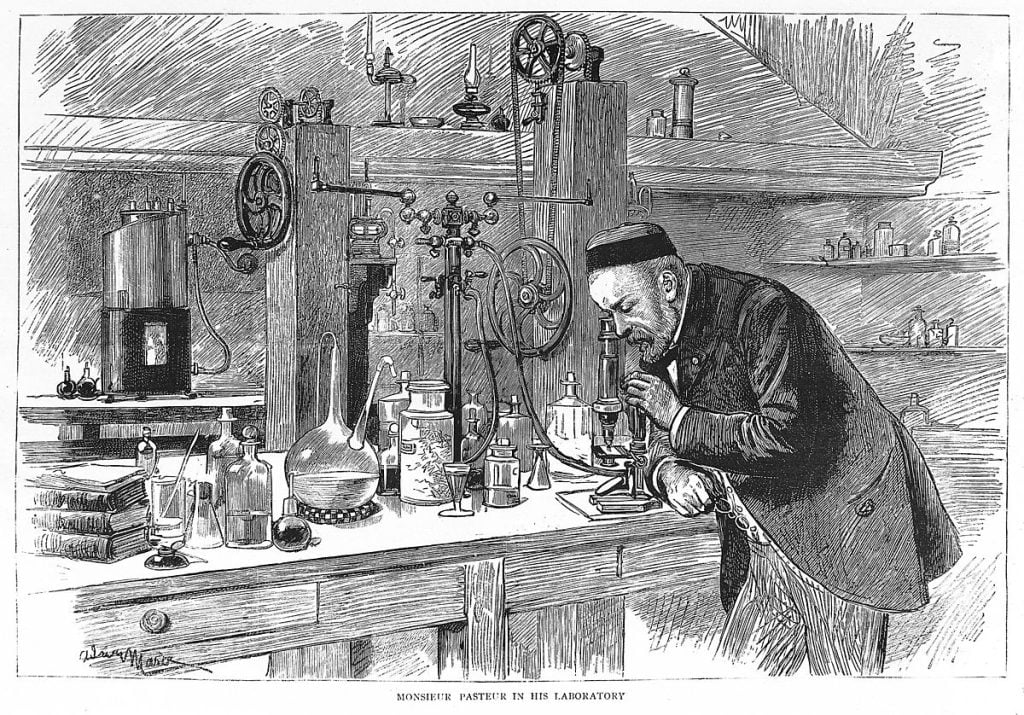The story is told that at the end of the 19th century, a group of Russian peasants who were bitten by a wolf were sent to Paris to the microbiologist Louis Pasteur for treatment. We checked how reliable this story is.
This story, for example, several times told the authors of the History Porn public page on VKontakte to their readers. It is reported that in 1886, in the Smolensk province, a wolf bit several peasants, and the zemstvo activist Pyotr Grablenov, who had read about Pasteur’s research, decided to send them to France for treatment. They collected money for the journey and stay in Paris, 19 peasants were brought to Paris, almost all of them were saved. The result of the vaccine allegedly even became a reason for the French, who did not believe in Pasteur’s development, to raise money for the construction of his research institute.
Let’s say right away that the story about Smolensk men undergoing treatment in the French capital is also reflected on several authoritative resources. In particular, in 2019, an article on this topic was published on the website “BBC Russian Service", and a year earlier - in the magazine "New Literary Review" The episode is also known to English-speaking readers - in particular, it is cited by Paul de Cruyff in the book Microbe Hunters, René Vallery-Rado in The Life of Pasteur and many other authors. Unfortunately, due to the specific nature of these texts, the story about the Smolensk patients is mentioned in them either in passing or without reference to sources of that time.
In 2020, physician and medical historian Anne-Valerie Thirion became interested in the story of Russian peasants who came to Pasteur. In her research she considered this episode, based on press materials of that time and archival documents. The information discovered by the scientist is somewhat different from that published in the press and social networks.
In mid-February 1886, in a small town called Bely in the Smolensk province, several people were actually bitten by wolves. The victims were given first aid, some of them were even hospitalized, although at that time they did not know how to treat rabies in Russia - infection, in fact, was a death sentence. Pavel Grablenov told the mayor Fyodor Regunov about Pasteur’s experiments, who sent the scientist a telegram. Pasteur received it on March 2 and agreed to accept the patients along with their accompanying persons. 1000 rub. They collected money for their shipment thanks to philanthropists and a donation from the imperial family.
On March 13, future patients arrived in Paris by train and were met by the Russian ambassador, Baron Morenheim. The peasants were placed in a hotel and registered in a special book of records, where their last name, first name, age, profession, place of birth and residence, and marital status were recorded. This document also describes the damage caused by the wolf and the course of treatment, and also indicates the doctor assigned to each patient. The notes say that those arriving from Smolensk are undergoing treatment “at the request of Mr. Pasteur.”
Vaccination at Pasteur's laboratory begins at 11 a.m. the next day, March 14, 1886. Due to the fact that many were seriously injured, and a long time passed between infection and the start of treatment, it was decided to give one to two injections daily for a half-month, for a total of 23 vaccinations. As French newspapers of that time noted, visitors from Bely who did not know the language were helped by numerous Russian students who studied in Paris. The peasants were amazed at how they were received: they were accommodated in a very decent hotel, their linen was changed and they were looked after in every possible way. As Pasteur reported in an interview with a French journalist, he vaccinated Smolensk peasants at his own expense. Despite all efforts, three of the 19 Smolensk peasants who arrived in Paris died of rabies - the wounds were too severe, and treatment began late.

At the same time, Tyrion calls not to overestimate the influence of the “delegation” from White on the emergence of the Pasteur Institute. As the researcher emphasizes, patients from the Smolensk province were far from the only ones who wanted to use the vaccine. Since 1885, several hundred people have been vaccinated, including victims from the British, Germans and even Americans who were brought to Pasteur. He gave a speech about the results of his work at the Academy of Sciences on March 1, 1886 (12 days before the arrival of Russian peasants). The incredibly wide coverage of their treatment in the press did help greatly, but it is still unnecessary to call it a major factor.
Although the story given by various sources (from VKontakte public pages to the BBC) generally corresponds to the documents, and therefore to reality, often its minor details differ from the data of researchers. For example, the story about the peasants who walked alone around Paris, not knowing a word of French, seems to be an outright exaggeration - as stated above, they were helped by Russian students. Different sources differ in the amount that Emperor Alexander III donated to the creation of the Pasteur Institute: from 100,000 to 300,000 francs. We also were unable to find confirmation that the tsar awarded Pasteur the Order of St. Anne for his services. At the same time, these subtleties are only indirectly related to the very fact of the trip and treatment of peasants in Paris.
Is it true
- Anne-Valérie Thirion. Pasteur et les Russes de Smolensk
- René Vallery-Radot. The Life of Pasteur
- Institute Pasteur. Our history
If you find a spelling or grammatical error, please let us know by highlighting the error text and clicking Ctrl+Enter.







